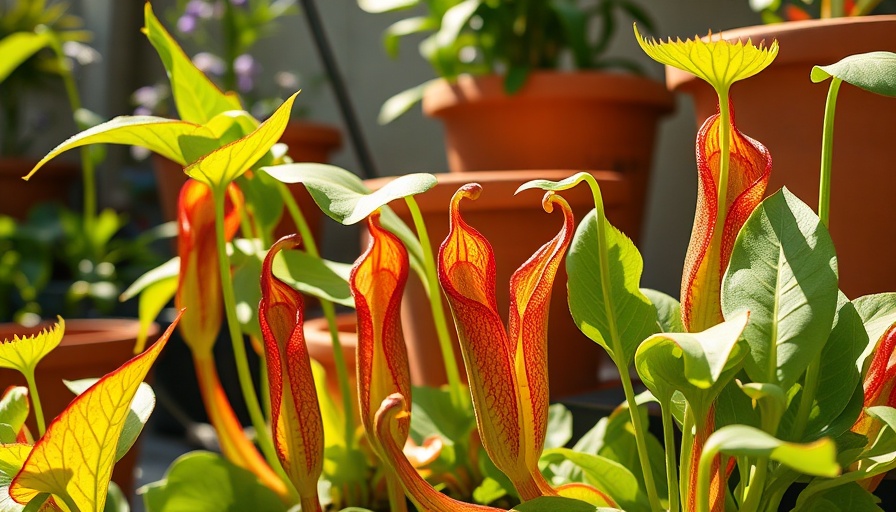
Carnivorous Plants: Nature's Masterful Engineers
Carnivorous plants have mesmerized enthusiasts and gardening aficionados for centuries, thanks to their incredible adaptations that enable them to thrive in environments that are typically inhospitable to vegetation. These unique organisms have evolved sophisticated trapping mechanisms to capture and digest insects, allowing them to supplement their nutrient intake in areas where soil quality is poor. But what if incorporating these fascinating plants into your garden could transform not only its aesthetic charm but also your approach to gardening?
Why Grow Carnivorous Plants?
For many, carnivorous plants pique interest because of their exotic appearance and captivating feeding strategies. However, the benefits extend beyond mere visuals. These plants are relatively low-maintenance, requiring specific care that can even put an end to some pests in the garden. With species like the Venus flytrap, known for its swift movement and engaging feeding process, you can create a dialogue between your garden and its inhabitants—both human and insect.
The Venus Flytrap: A Marvel of Nature
The Venus flytrap (Dionaea muscipula) is probably the most famous of all carnivorous plants, recognized for its jaw-like traps that snap shut when sensitive hairs inside are triggered. Native to the subtropical wetlands of the Eastern United States, the flytrap not only demonstrates nature's resilience but also emphasizes the importance of understanding the environment it thrives in.
To ensure a healthy Venus flytrap, follow these guidelines:
- Soil: Utilize a mix of sphagnum moss and sand or peat, allowing for excellent drainage while keeping a low nutrient profile.
- Water: Always use distilled, rain, or filtered water to avoid minerals that can harm the plant.
- Sunlight: Provide full sunlight; ideally, the plant should bask in at least 12 hours of sunlight per day to thrive.
- Humidity: Keep humidity levels above 50% for optimal growth, ensuring an environment reminiscent of its native habitat.
Captivating Adaptations: The Purple Pitcher Plant
Another glorious example is the purple pitcher plant (Sarracenia purpurea). This species features a beautifully constructed tubular shape that lures insects in with sweet nectar, only to trap them within its glossy, slippery walls. Found predominantly in North America, these pitcher plants can thrive in nutrient-deficient environments while providing a striking visual if placed correctly within your garden landscape.
Check out our guide on caring for purple pitcher plants!Bringing Exotic Beauty to Your Backyard
For those looking to introduce a touch of the exotic to their own backyards, understanding the optimal growing conditions for various carnivorous plants is vital. With the appropriate conditions—adequate sunlight, humidity levels above 50%, and a careful choice of soil—these plants can flourish in your garden and become a major talking point among friends and family.
Additionally, growing carnivorous plants can encourage children and young adults to engage with science and horticulture. It provides a hands-on experience in biology and fosters an appreciation for the diversity and complexity of our ecosystem.
Future Trends: The Growing Popularity of Carnivorous Plants
As sustainable gardening continues to gain popularity, the interest in cultivating plants that naturally control pest populations is also rising. More people are recognizing the dual benefits of beauty and functionality embodied in carnivorous plants. As urban environments seek to become greener and more insect-friendly, consider how these exceptional plants can play an integral role in a well-balanced ecosystem.
Actionable Insights: Your Next Steps
Think carefully about how you can integrate carnivorous plants into your outdoor space. Research the plants that are well-suited to your local climate and available growing conditions. Start small with one or two species to see how they fit into your gardening routine before expanding your collection. Inquire at your local nursery about which plants perform best in your region and begin your journey toward creating an intriguing and sustainable garden.
Ready to start your journey into the fascinating world of carnivorous plants? Explore our resource guides today and unleash your inner gardener!
 Add Row
Add Row  Add
Add 




Write A Comment